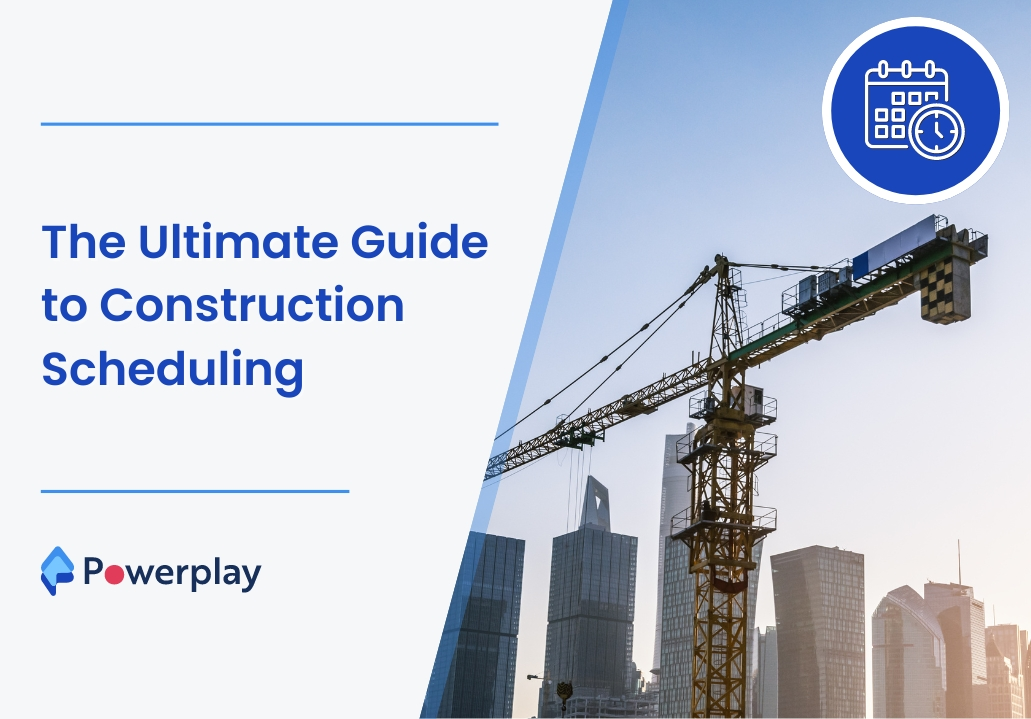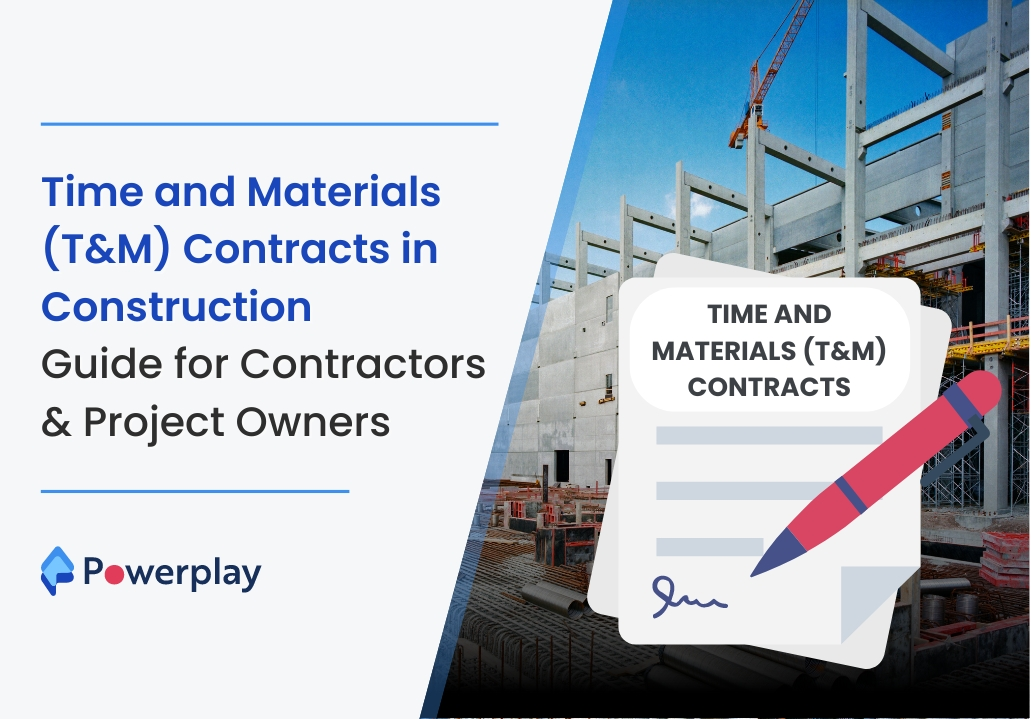Construction Cost Estimating: A Step-By-Step Guide
-
Sapna
- May 28, 2024

Construction cost estimating is an essential procedure involving a detailed calculation of every expense likely to be incurred in a building project, including direct expenses such as materials and labour and indirect costs such as equipment rental and administrative charges. Skilled construction estimators usually perform this vital task during the project’s planning phase to ensure both the project owner and contractors can execute the work within budget while still achieving a profit.

Accurate estimation of construction costs requires an in-depth understanding of the materials necessary, current construction methodologies, applicable regulations, and fluctuating market prices. This blog will guide you through the steps that professional estimators take to compile an accurate project cost, from initial project analysis and gathering data to adjusting for unforeseen circumstances and ensuring room for profit.
Table of Contents
What Is a Construction Estimate?
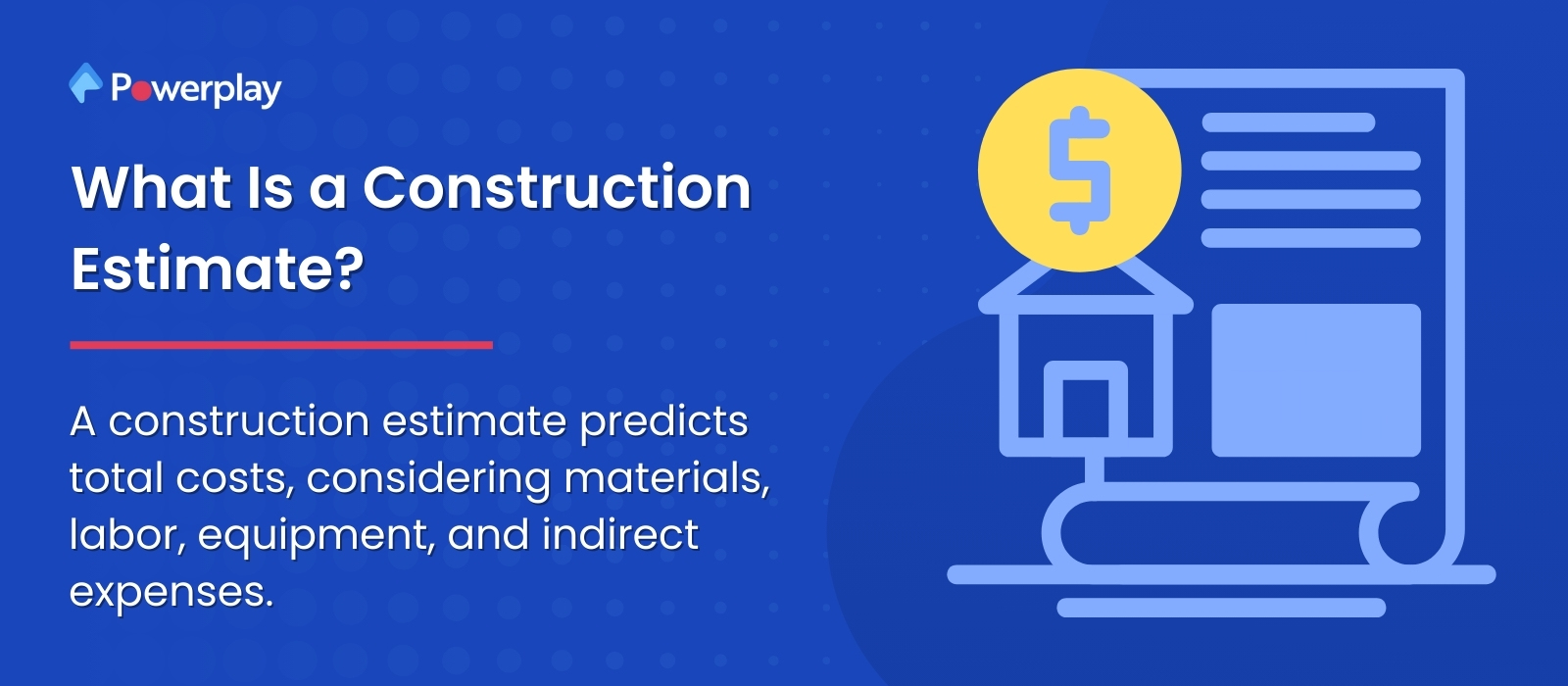
A construction estimate is a detailed financial assessment prepared by estimators to predict the costs associated with a construction project. This comprehensive calculation considers materials, labour, equipment, subcontractor expenses, and indirect costs like permits and administrative fees.
What Is Construction Cost Estimating?
Construction cost estimating is forecasting the total cost of finishing a building project from start to finish. This process involves meticulously evaluating all potential expenses, including materials, labour, equipment, and other construction costs.
The construction cost estimator also accounts for overheads and potential risks affecting the project’s financials. The primary aim of construction cost estimating is to provide a detailed, accurate projection that aids in budgeting, bidding, and financial planning. This allows construction firms to allocate resources effectively, control costs, manage risks, and ensure project profitability.
Why is estimating important?
Estimating is crucial in construction and various industries because it is the foundation for financial planning and project management. Accurate estimates enable businesses to determine the feasibility of projects, set budgets, and manage resources effectively. They help in bidding competitively, securing contracts, and maintaining profitability.
Estimating also aids in anticipating potential risks and creating mitigation strategies, ensuring that projects can proceed with minimal disruptions. Furthermore, it facilitates transparent communication with stakeholders about costs and timelines, enhancing trust and satisfaction. Overall, effective estimating is essential for successful project execution and the long-term sustainability of a business.
When to Use a Construction Cost Estimating
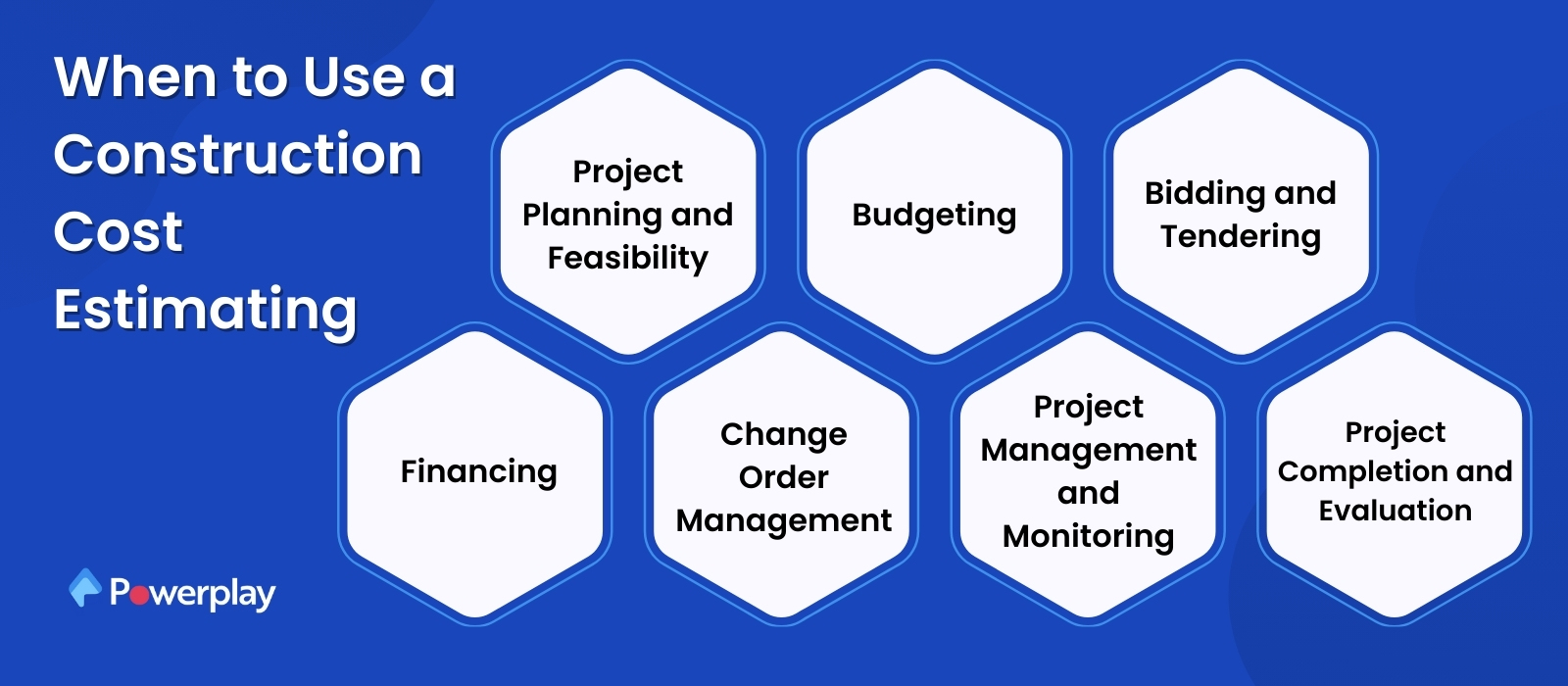
Construction construction cost estimation and estimating is a critical process used at various stages of a project’s lifecycle to ensure effective financial and resource management. Here are key instances when construction cost estimating is typically employed:
- Project Planning and Feasibility:
Cost estimating is essential before initiating any construction project to determine its viability. This helps stakeholders understand whether the potential benefits justify the investment and assists in decision-making about proceeding with the project.
- Budgeting:
Estimating sets the overall budget for the construction project. It provides a financial blueprint that guides spending and resource allocation throughout the project’s duration.
- Bidding and Tendering:
Construction companies use detailed cost estimates to prepare their bids for tender submissions. Accurate estimating ensures competitive pricing, increasing the likelihood of winning contracts without compromising profit margins.
- Financing:
Banks and other financial institutions often require cost estimates to secure funding for construction projects. They provide a breakdown of costs that reassures lenders about the feasibility and financial management of the project.
- Change Order Management:
Changes and adjustments are often necessary during the construction process. Cost estimating evaluates these changes’ financial impact and negotiates additional funding or time extensions.
- Project Management and Monitoring:
Throughout the construction phase, ongoing cost estimating is crucial for tracking actual expenses against the forecasted budget. This enables project managers to identify cost overruns early and implement corrective actions to keep the project on track.
- Project Completion and Evaluation:
At the completion stage, final cost estimates help assess the order of magnitude project’s financial performance against its initial estimates. This evaluation is vital for understanding profitability, improving cost management strategies, and refining estimating practices for future projects.
What are the benefits of cost estimating in construction?
Cost estimating in construction offers numerous benefits crucial for the successful execution and financial management of any project.

Here are five key benefits:
Improved Budget Management:
Accurate cost estimates help set realistic budgets, calculate construction costs and allocate funds appropriately across different stages of the construction process. This ensures that the project stays financially viable with efficiently use of resources.
Enhanced Decision Making:
With detailed and accurate cost estimation and estimates, project stakeholders can make informed decisions regarding project scope, materials, and methodologies. It allows for comparing different options and selecting the most cost-effective solutions without compromising quality.
Increased Project Viability and Feasibility:
Before any financial commitments are made, cost estimating assesses whether a project is viable and feasible within the projected budget. This assessment helps determine the potential return on investment and secure funding from investors or financial institutions.
Risk Mitigation:
A thorough cost estimate identifies potential financial risks by forecasting unexpected costs and scenarios. This enables project managers to devise contingency plans and allocate budget reserves to manage risks effectively and prevent cost overruns.
Competitive Bidding and Winning Contracts:
Detailed and accurate cost estimates are essential for preparing competitive bids that are financially sound yet attractive to clients. This not only increases the chances of winning contracts but also ensures that the project can be completed within the bid price, maintaining profitability.
Construction Estimating Process: How to Estimate Construction Costs In 8 Steps
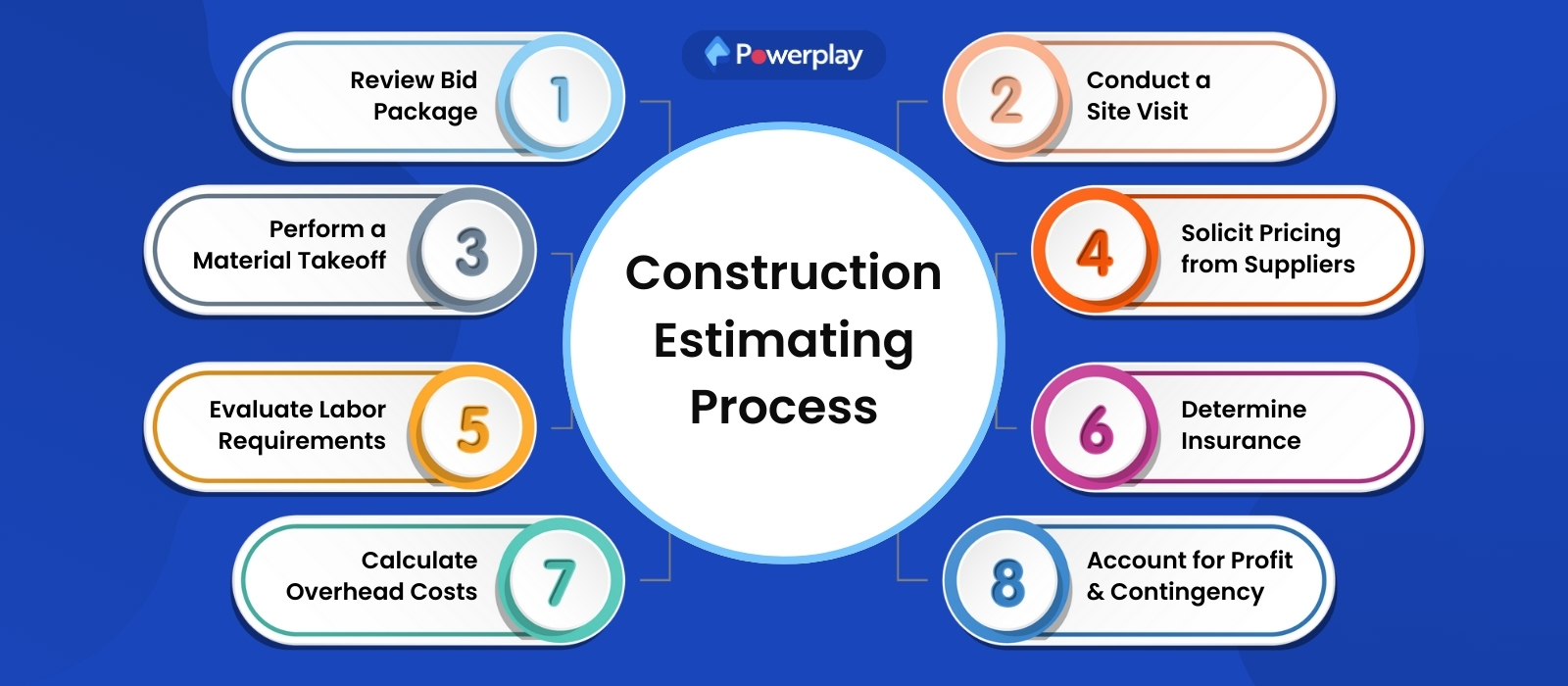
Estimating construction costs is meticulous and requires a systematic approach to ensure accuracy and reliability.
Here’s a detailed explanation of the eight-step process typically used:
Review Bid Package:
Begin by thoroughly examining the bid package, which includes all the project specifications, drawings, and requirements. Understanding the project’s scope unit cost, and demands is crucial for a comprehensive estimate.
Conduct a Site Visit:
Visit the project site to assess conditions that could influence construction, such as site accessibility, environmental factors, and existing structures. This firsthand observation is vital for accurate forecasting.
Perform a Material Takeoff:
List all materials required for the project, from major components like steel and concrete to minor items like nails and sealants. This detailed inventory ensures that all material and labor costs are accounted for.
Solicit Pricing from Suppliers and Vendors:
Obtain quotes from multiple suppliers and vendors for the materials listed. Comparing prices helps secure the most cost-effective options without compromising quality.
Evaluate Labor Requirements:
Analyse the labour needs based on the project’s complexity and duration. Include the number of workers, types of skills needed, and estimated hours. Calculate labour rates, overtime, and benefits.
Determine Insurance and Bonding Costs:
Assess the insurance and bonding requirements necessary to protect the project and comply with legal standards. Include these costs in the estimate to cover potential risks and liabilities.
Calculate Overhead and Indirect Costs:
Identify all indirect expenses associated with the project, estimated costs such as project management, utilities, equipment depreciation, and office support. These overhead costs are essential for the total project budget.
Account for Profit and Contingency:
Finally, include a profit markup and a contingency budget for unforeseen expenses. This ensures the project is financially viable and can adapt to unexpected changes or challenges.
Key Components of a Construction Estimate

Construction estimates are typically prepared by a project estimator. However, depending on the project’s scale and the organisational structure, the task of construction cost estimate might also fall to a project manager or another team member. Creating an estimate involves thoroughly analysing construction plans and related documents to calculate the total cost. While different individuals or organisations may adopt varying methods for this assessment, most construction estimates encompass several fundamental components:
- Direct Costs: These are the expenses directly related to the construction process, including the costs of materials, labour, and equipment.
- Indirect Costs: These costs are not directly related to the physical construction but are necessary for supporting the project. They include expenses like project management, site security, utilities, administrative fees, legal services, and permit acquisitions.
- Labour Hours: This includes the wages paid to workers, factoring in basic hourly rates, potential overtime, taxes, and other labour-related costs.
- Subcontractor Costs: These estimates cover the costs of labor, materials, and equipment that subcontractors will use for portions of the project outsourced to them.
Construction Estimating Levels
The American Society of Professional Estimators delineates a structured five-level system for construction cost estimating, enhancing accuracy and detail at each stage.

Here’s a breakdown similar to the outlined levels:
- Level 1 – Conceptual Estimate: This initial estimate is created early in the project lifecycle, often during the feasibility or concept phase. It relies heavily on expert judgment, historical data, and analogous projects to provide a ballpark figure for overall project costs.
- Level 2 – Schematic Estimate: As schematic designs bring project details into focus, the estimate refines to include specific elements that have been decided upon, such as general layouts and basic materials.
- Level 3 – Design Development Estimate: The estimate is further detailed as the project design progresses and more details are available. It now includes refined elements like precise materials, detailed site considerations, and equipment needs, providing a reliable basis for budgeting.
- Level 4 – Detailed Estimate: Once the project reaches the detailed design phase, complete with construction documents and finalised specifications, the estimate is updated to include all known details. This includes precise quantities, labour rates, and specific material costs, allowing for an accurate projection of total costs.
- Level 5 – Bid Estimate: This final estimate is comprehensive and accurate, incorporating all project specifics. It is used to submit bids and set the cost baseline. All potential costs are known, making this estimate crucial for the bidding process and establishing financial controls.
Construction Estimate Template
A construction estimate template is a preformatted document that streamlines the calculation of total project costs. It typically includes sections for itemising materials, labor, equipment, and other expenses to ensure that nothing gets overlook. This template will help estimators ensure total project cost accuracy and consistency, facilitating quick and reliable financial assessments.
Common Mistakes To Avoid
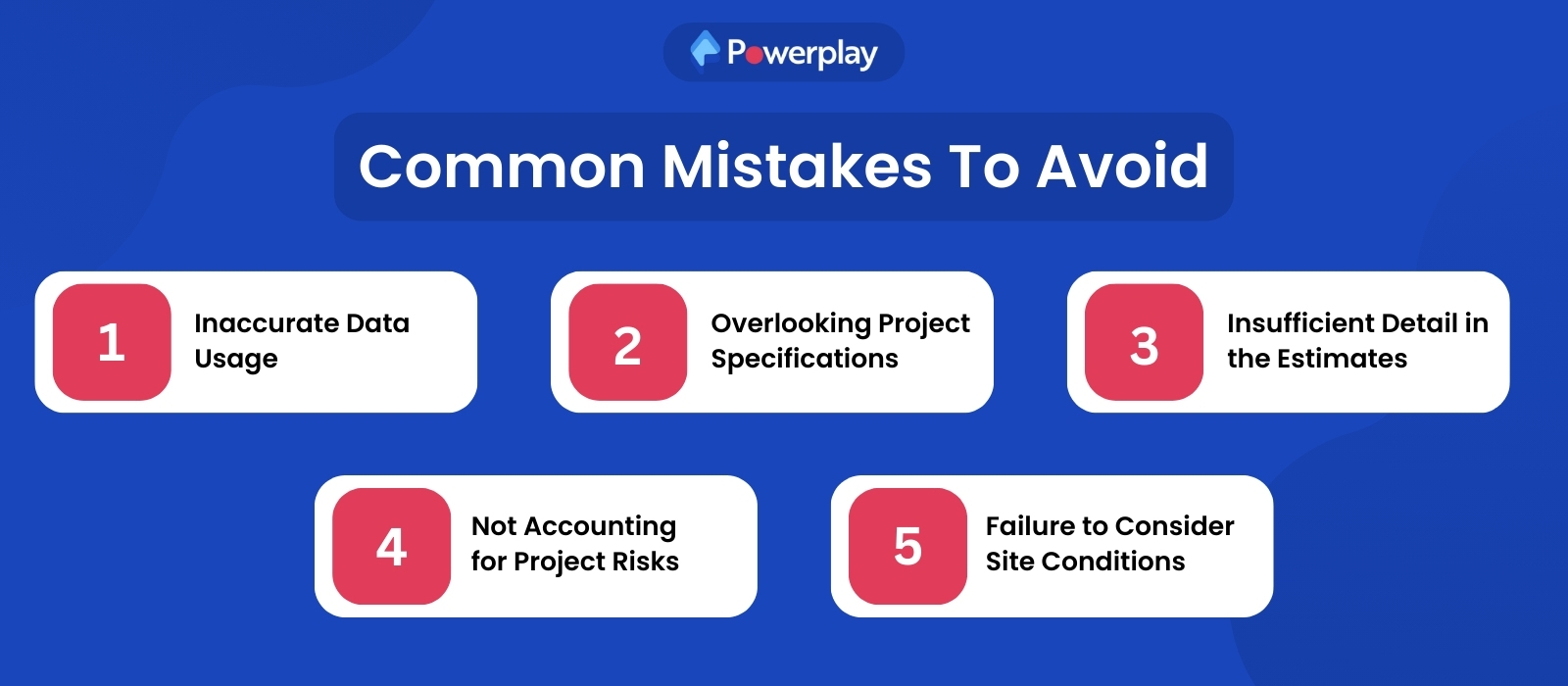
Estimating construction costs is a crucial step in the management of construction projects. Accurate construction cost estimates are essential for staying within budget, securing funding, and ensuring project profitability. Here are some common mistakes to avoid in construction cost estimating:
- Inaccurate Data Usage: Using outdated or incorrect cost data can lead to inaccurate estimates. Using up-to-date and relevant cost information that reflects current market conditions is important.
- Overlooking Project Specifications: Failing to review the project specifications and plans thoroughly can lead to missing key items or misinterpreting the scope of work. This can result in significant discrepancies between the estimated and actual costs.
- Insufficient Detail in the Estimates: A lack of detail can lead to overlooking some costs entirely. Detailed estimates help understand all aspects of the project, including materials, labour, equipment, and overheads.
- Not Accounting for Project Risks: Every project carries risks, and failing to include risk contingencies in the budget can leave you unprepared for unexpected costs. It’s essential to assess potential risks and allocate a contingency budget accordingly.
- Failure to Consider Site Conditions: Site-specific conditions such as soil quality, weather, accessibility, and local regulations can significantly impact the costs. Not considering these factors can lead to underestimated project costs.
What Does a Construction Estimator Do?
A construction and cost estimator often analyses project plans and specifications to forecast the costs associated with materials, labour, equipment, and subcontractors. They prepare detailed estimates to guide budgeting, assist in bid proposals, and help manage financial risks. Their work ensures projects are economically viable and competitively priced.
What Is Construction Estimating Software?
Construction estimating software is a specialised tool designed to assist contractors, engineers, and architects in accurately predict the costs associated with a construction project. This software automates calculating total expenses by incorporating data on labour, materials, equipment, and subcontractor fees, along with adjustments for inflation, project duration, and potential risk factors.
It streamlines the cost estimation process further, enhances accuracy, reduces the chance of human error, and allows for the quick adjustment of estimates as project details evolve. Additionally, this software often includes features for bid management, project scheduling, and financial analysis, making it a comprehensive tool for construction project management.
Why Use Cost Estimating Software?
Using cost-estimating software offers numerous advantages for managing construction projects effectively.
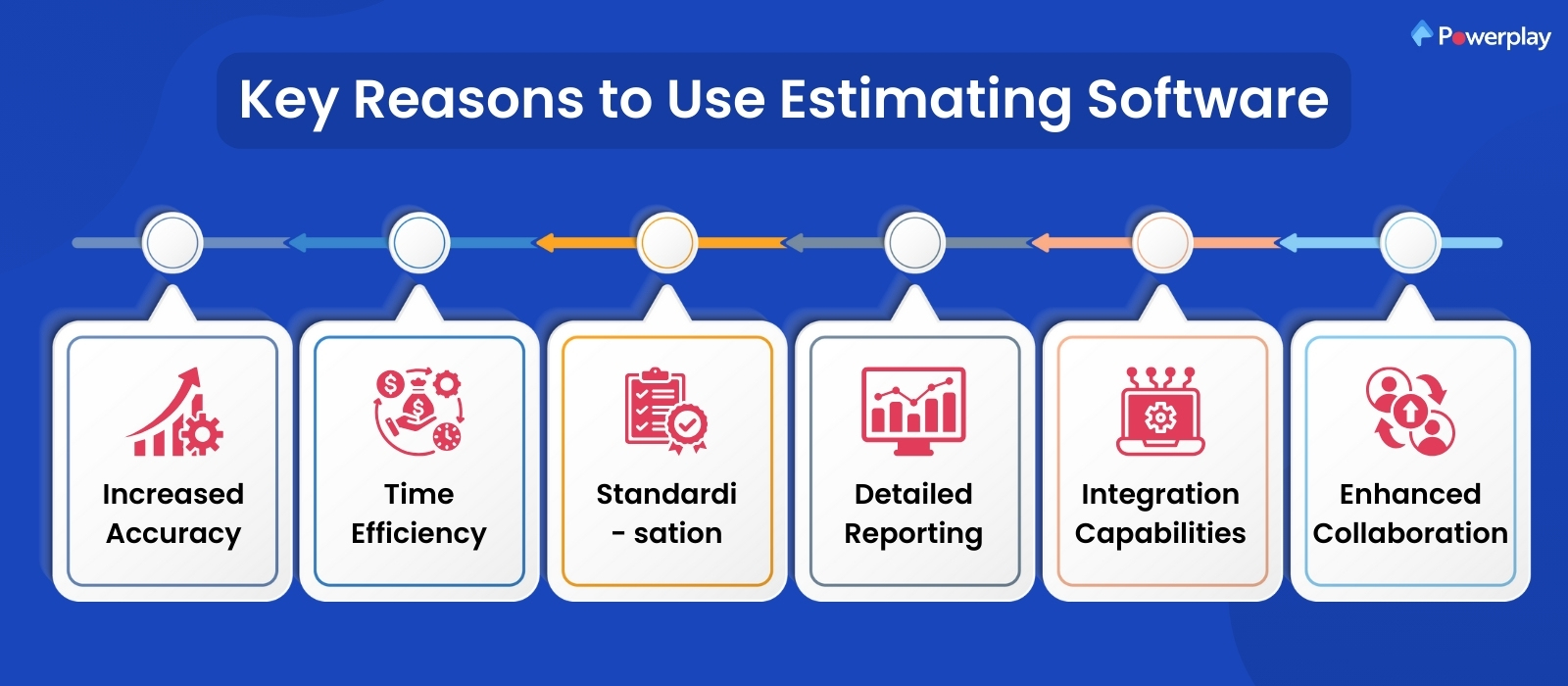
Here are some key reasons to incorporate such software:
- Increased Accuracy: Cost estimating software reduces human errors by automating calculations and aggregating data from various sources. It uses up-to-date pricing databases and adjusts for material, labour, and overhead costs, leading to more precise estimates.
- Time Efficiency: The software significantly speeds up the estimating process by automating many tasks that would otherwise be manually intensive. This allows estimators to complete more estimates in less time, increasing productivity.
- Standardisation: The software standardises estimates by using predefined templates and consistent calculation methods, ensuring that all estimates adhere to the same standards and procedures. This standardisation is crucial for maintaining quality and comparability across multiple projects.
- Detailed Reporting: Cost estimating software typically includes the ability to generate detailed reports and analyses, providing clear visibility into every aspect of the project’s costs. This can help present estimates to clients, manage budgets, and make informed decisions.
- Integration Capabilities: Many cost estimating tools can integrate with other project management and accounting software. This integration facilitates seamless information flow and helps maintain consistency in data across various aspects of project management.
- Enhanced Collaboration: Some cost estimating software offers cloud-based collaboration features, allowing the entire team to work together in real time, regardless of location. This enhances communication and coordination among project stakeholders.
How Powerplay Helps With Construction Estimating
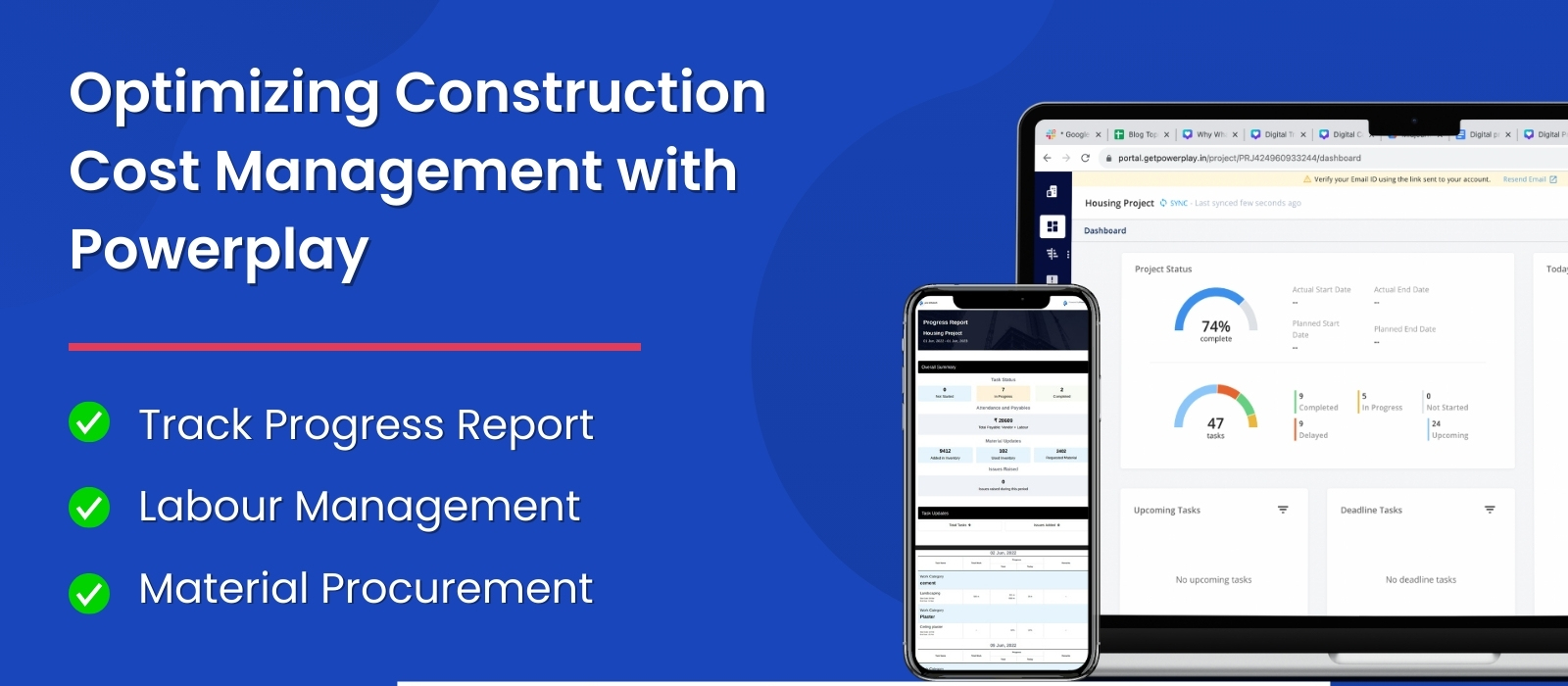
Powerplay stands out in the construction industry as a comprehensive construction estimating software designed to enhance construction cost management through its advanced features. This software provides accurate material forecasts and efficiently manages labour payables, which is crucial for maintaining budget control and ensuring timely project completion. One of its key functionalities includes petty cash management, which helps track and control small, incidental expenses that often go unnoticed but can accumulate significantly.
Powerplay integrates these elements seamlessly, allowing real-time updates and adjustments essential for dynamic construction environments. With its robust capabilities in handling detailed cost breakdowns, Powerplay allows construction managers to ensure that every aspect of cost, from the procurement of construction materials to labour payments, is carefully calculated and managed, leading to enhanced profitability and operational efficiency.
Conclusion
Mastering the art of construction cost estimating is crucial for the success of any construction project. It ensures financial viability, optimises resource allocation, and supports strategic decision-making throughout the project lifecycle. Professionals can avoid common pitfalls and enhance project outcomes by adopting a systematic approach to the cost estimating process, which includes understanding the detailed steps and integrating robust tools like construction estimating software.
Construction management software solutions like Powerplay are revolutionising the industry by offering precise, real-time insights into material costs and labour management, proving indispensable for today’s construction managers. Embracing these practices and tools is key to achieving efficient and profitable construction projects.





